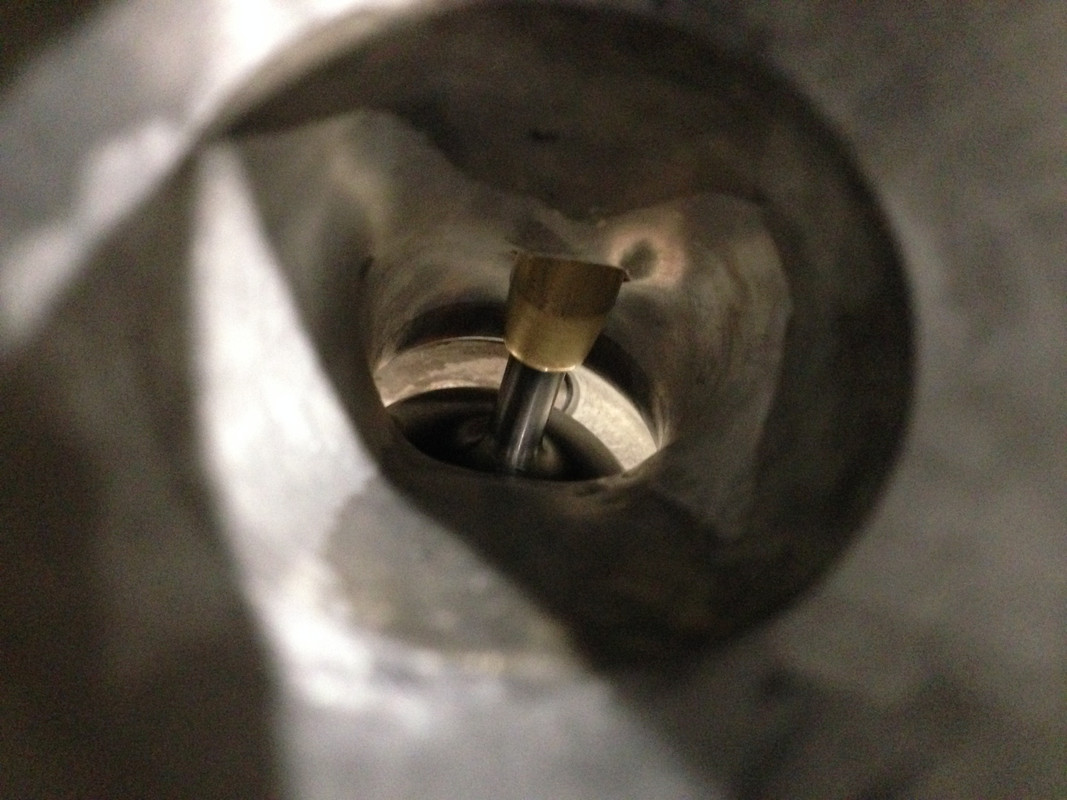You can get more air through with polished but it doesn't make up for shape and smoothness, being without jumps and bumps. If it looks like it's been finished with a brick I think it's counter productive, I remember seeing that in a Ducati shop when I was young. Good quality performance jobs look smooth.
The advantage with the BSA head is although like others the port cannot go very high near the guide, it can go wide. The std 68-701 head is only 17-18mm wide at the guide, BSA used a special head on the Mk4 Spitfire in 1968, it had 9-1 pistons not 10-10.5-1 like its predecessors but made more power. Flow was better in the region of 109cfm to 139cfm, the big difference was opening up that restriction and turning the charge with a deeper bowl. They deepened it by 2mm and widened it at the guide from 17-18mm to 32mm, it was that simple.
The A65 can go quite wide, so comparing that with a ported 34mm port head using a 42mm valve, it's 40.5mm deep in the bowl and 39mm wide at the guide, if the air is going round the guide you just make space, without that space it doesn't venturi to any good effect, it blocks, the floor is lifted to turn it and flow jumps to 165cfm or 179cfm with a bell because it becomes very particular about having a smooth entry when speed gets over 400fps, otherwise it rips off the sharp edge of the port and blocks it with turbulence I expect, speed is down on the edges and up in the centre.
This is looking down a 34mm oval port using a 44.5mm valve. The dark areas are fill. It shows how it's wide at the guide so the air can simply go around, take the valve out it flows less air. This one flows over 190cfm and is like the one on the 734. If you are wondering why they are oval it's because of limiting height in the head and both top and bottom need smooth curves, the air is forced around the top, the wall it runs into turns it. if it goes down before the guide then back up the air leaves the wall. On the bottom it just lifts it a bit before curving down onto the valve.


